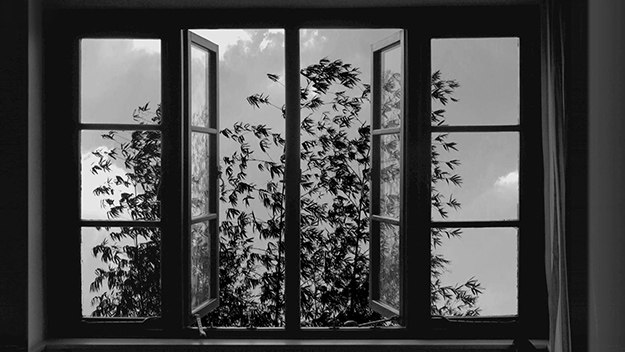The 1st Frame

Soundscape to Paintings- inspired by Abbas Kiarostami’s 24 Frames
A still image is a fragment of a second, it captures a moment in time. It freezes a moment, a feeling, a gaze… we are left with it stipulating, assuming and guessing.
Watching Kiarostami’s last film 24 Frames, for me coincided with discovering John Berger’s Ways of seeing. Together they made me start questioning the way I perceived still images. We all have cameras on our phones these days. We freeze a moment in time every time we take a snap. Then it stays on our phones or somewhere in the cloud. But what happens to the space or the subject in our photos after we have left with that photo in our pockets? What happened before the moment we got there to took the perfect photo.
This
notion opened a world of questions to me. As a sound designer, I
instantly asked;
What does that mean for sound? What sound can do in this
context?
Sound is associated with movement. When there’s
no movement we think there’s no sound. In other words, sound,
presupposes movement from the outset. This is the
exact
quality which
makes sound temporalises the moving
image.
But how does sound
react in this setting? Can sound temporalise a still image as well?
And if yes, to what extent?
Paintings and photographs share similar qualities due to their stillness, but they are also very different at the same time. The artist again tries to render a moment in time. But in my opinion the big difference is that taking a picture is usually an instant act, whereas a painter works on a subject, for a prolonged period of time. In the process which could takes days, months or even years, there would be a huge amount of detail and meaning added into a painting.
In the series of Soundscapes to Paintings, I am not trying to modify the meaning of the paintings. Instead I’m trying to imagine the motifs and find my relationship with them. By trying to imagine what was before and what would become after-I am seeking to expand the narrative beyond the frame. I think in 24 Frames, Kiarostami intentionally avoided imposing any narrative to his images.
One frame moving to the next is the essence of cinema. A frame on its own is dead, locked in place for eternity; but as soon as you add another-even just one more—and all the space between them comes to life, it feels like it is moving towards an inner progression. But can sound create this progression instead? Can I put a frozen image back into the flow of time with sound?
In assembling these sketches, I found that I am making minimalist audio compositions, that are often repetitive, but developing very gradually. I noticed that sound is giving the still image an illusion of duration. This gives me the opportunity to ponder what duration adds—or subtracts—from a still picture. And I think what I want to achieve is a still image that resonates-it is in a state suspended between stillness and motion. I set to exercise the poetry that slow cinema offers.